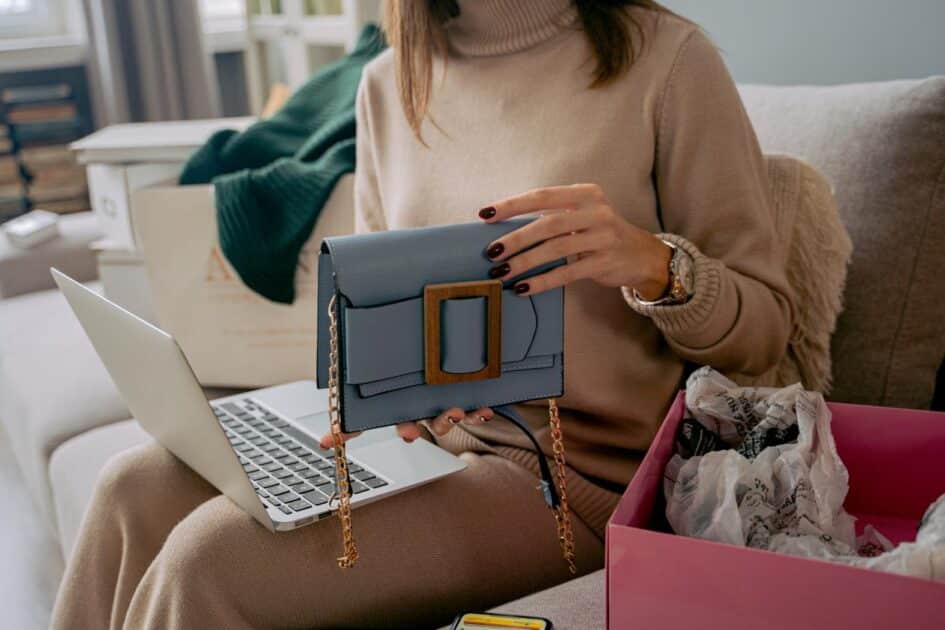Packing your handbag can be a bit like solving a puzzle, especially when you’re trying to fit everything you need without it turning into a black hole of endless stuff. It’s all about maximizing space while keeping your essentials organized and accessible.

Ever found yourself digging for your keys or phone, feeling like you’re on a treasure hunt? Well, you’re not alone. Let’s crack the code to a perfectly packed handbag that’ll make your life easier, whether you’re heading to work, running errands, or jetting off on a weekend getaway.
Choosing the Right Handbag for Travel
When you’re on the move, your handbag is more than a fashion statement—it’s a lifeline. The trick to picking the perfect travel companion lies in a few key features.
Size matters. Think about what you’ll carry. If you’re toting only essentials—wallet, phone, keys—a smaller bag might suffice. For more items like a tablet, water bottle, or a travel guide, go larger. But remember, airlines have size restrictions for carry-on luggage. Check your airline’s policy to avoid last-minute hassles.
Material is crucial for durability. Leather is robust but can be heavy. Nylon and canvas are lightweight and withstand rough handling. If you’re traveling to a destination known for rain, consider water-resistant or waterproof materials.
Organization is key. Look for a handbag with multiple compartments to separate your items—and save you from fishing around. A designated pocket for your passport and travel documents can be a game-changer.
Consider these features for added functionality:
- Adjustable straps for comfort.
- Zippered compartments for security.
- A flat bottom so it stays upright.
- An external pocket for quick access to your phone or boarding pass.
Lastly, style doesn’t take a backseat. You want a handbag that reflects your look and feels good to wear. Whether it’s a sleek messenger bag, a chic tote, or a crossbody that keeps your hands free, choose one that meshes with your personal style and makes you feel confident.
By prioritizing practicality and style, you’ll find the perfect travel handbag that not only looks good but makes your journey smoother. Remember, the right handbag for travel will balance functionality with aesthetics, ensuring you’re prepared and stylish on the go.
Decluttering and Streamlining Your Essentials
When you begin to declutter your handbag, think of it as curating your daily carry. Your goal is to carry only what you need, nothing more.
Start by emptying your current handbag. Lay out everything and categorize the items:
- Essentials like your wallet, phone, and keys
- Beauty products
- Miscellaneous items like receipts or loose coins
Once categorized, it’s time to be ruthless. Ask yourself when you last used each item. If it’s been a while, it probably doesn’t belong in your handbag. Remember, less is more when it comes to efficient packing.
Next, minimize duplicates. Do you really need four lipsticks on the go? Select a versatile shade that works for day and night. The same applies to pens, notebooks, and other similar items. Opt for multi-functional products that can serve more than one purpose, such as a moisturizing lip balm that can also tame flyaways.
Re-assess your wallet. Often, it’s filled with outdated cards and receipts you no longer need. Streamline to the essentials: one or two credit or debit cards, your ID, and a small amount of cash.
Invest in small pouches or bags for different categories of items. This organization hack prevents the endless search for small items at the bottom of your bag.
Consider digital alternatives. Store loyalty cards and tickets on your phone. Not only does it save space, it’s also more convenient and often secure.
Finally, make a habit of decluttering your handbag weekly. This ensures you’re always carrying just what you need and nothing that adds unnecessary bulk or weight. Regular decluttering also prolongs the life of your handbag by preventing overstuffing and maintaining its shape.
Organizing Your Handbag with Pouches and Dividers
Once you’ve narrowed down the essentials, it’s time to tackle organization. You don’t want a handbag where items just float around freely, do you? Of course not. Here’s how to keep everything in its place.
Use Pouches for Small Items: Small items tend to get lost at the bottom of your bag. Assign them to pouches. This simple step transforms your daily search-and-rescue missions into a smooth grab-and-go.
« Are Handbags a Good Investment? Unveil the Luxury Brands That Pay Off
Polish Handbag Craftsmanship: Unveiling Time-Honored Traditions in Modern Fashion »
Here are items you should pouch:
- Lip balms
- Hand sanitizer
- Earbuds
Think of pouches as mini drawers. You’ll know exactly where to reach when you need something.
Divide and Conquer your Space: Handbag dividers work wonders. They fit into the interior and offer dedicated slots for your belongings. Many are adjustable and cater to different handbag designs.
Here’s how to best use dividers:
- Keep frequently used items like your phone in an easily accessible slot.
- Place seldom-used items towards the center.
Opt for Specialized Organizers: Some organizers are designed with specific needs in mind, like slots for pens or insulated sections for snacks. If you always carry certain items, find an organizer that can accommodate those specifics.
Consider the Material: The material of your pouches and dividers should match your lifestyle. If you’re often caught in the rain, go for waterproof options. Love to switch bags? Choose lightweight materials.
By creating a designated spot for each item in your handbag, you ensure that your essentials are orderly and your bag maintains its shape. Organizing with pouches and dividers is not just about neatness, it’s about efficiency and function. Your future self will thank you for that extra minute you save not digging through your handbag.
Maximizing Space by Utilizing Every Nook and Cranny
When you’re packing your handbag, maximizing space is crucial. Space is at a premium, and you can’t afford to waste an inch. Look at your bag as if it’s a puzzle where every piece should fit perfectly. Identify the small pockets and hidden compartments; these are goldmines for storing items like bobby pins or ticket stubs.
But how do you use these spaces effectively?
- Slip thin items down the sides, such as a slim notebook or a packet of tissues.
- Tuck your sunglasses on the upper inside edge if they don’t have a bulky case.
- When not in use, flat items like scarves or gloves can lay at the bottom, forming a base for other things.
Consider your bag’s shape. Does it have a broad bottom or side pockets? Use these areas for bulkier items, ensuring they aren’t squashing your more delicate essentials. In side pockets, stash items you grab often, like your phone or keys, so they’re always within easy reach.
Adjustable straps often have enough give to slide in a pen or a pair of chopsticks. If your bag has a key fob, double its use by clipping a lightweight mini-pouch or your earbud case to it — this trick keeps them suspended and easy to find.
And don’t forget the value of going vertical. Stack items, and consider how you might layer things. For example:
- Place a small wallet or coin purse atop your flat-laid items.
- Slot a pack of gum or a small snack between stacked objects to utilize empty space.
Remember, effective handbag packing isn’t just about the items at the bottom; it’s also about considering how to layer and stack everything that comes after. This approach lets you access what you need without having to dig around, saving you time and preventing any potential handbag avalanches.
Packing Fragile or Delicate Items
Protecting your delicate items is a priority when packing your handbag. It’s not just about careful placement; it’s also about choosing the right protection. Start by wrapping fragile items in soft materials. Sunglasses or perfume bottles benefit from being wrapped in microfiber cloths or soft socks which act as a cushion.
Consider the firmness of different compartments. Some handbags come with built-in padded sections specifically for electronics or glasses. Utilize these for increased safety. If your bag lacks these features, small makeup bags or padded pouches serve as excellent alternatives for delicate items.
Positioning is crucial. Fragile items should be nestled securely somewhere in the middle of your handbag, never at the bottom where they could bear the weight of other items, nor at the top where they could be crushed when your bag is closed.
For items like jewelry or wired headphones, small rigid cases or tins can prevent tangling and damage. You might carry:
- Earrings
- Rings
- Fine necklaces
These need extra attention. A travel jewelry case with individual compartments protects and organizes them efficiently. For items that don’t require rigidity but still need organization, like headphones or charger cables, try reusable silicone bands or small zip pouches.
Handbags often bear the brunt of daily wear and tear, hence regular shake-ups of how we pack them, especially the fragile items, can prevent breakage and extend the life of both the items and the handbags themselves. Remember, it’s not about merely filling up space; it’s about thoughtful and strategic placement that takes your handbag’s layout and the nature of items into account. Pack smart and maintain the pristine condition of all your belongings.
Conclusion
So there you have it! With these tips, you’re now equipped to pack your handbag like a pro. Remember, the key is strategic placement to keep your belongings safe and your handbag organized. Next time you’re on the go, you’ll have everything you need right at your fingertips, without the worry of damaged goods. Happy packing and safe travels!
Frequently Asked Questions
How should fragile items be packed in a handbag?
Fragile items should be wrapped in soft materials and secured in the handbag’s padded sections or small makeup bags for additional protection.
What is a safe way to carry jewelry or wired headphones in my bag?
For jewelry or wired headphones, use small rigid cases or tins to prevent tangling and damage. Consider travel jewelry cases or reusable silicone bands for better organization.
Where is the best place to position delicate items in a handbag?
Delicate items should be positioned securely in the middle of the handbag to ensure they are cushioned and less susceptible to external impacts.
Why is the strategic placement of items in a handbag important?
Thoughtful and strategic placement is crucial to prevent breakage and maintain the condition of your belongings, especially when carrying fragile or delicate items.










